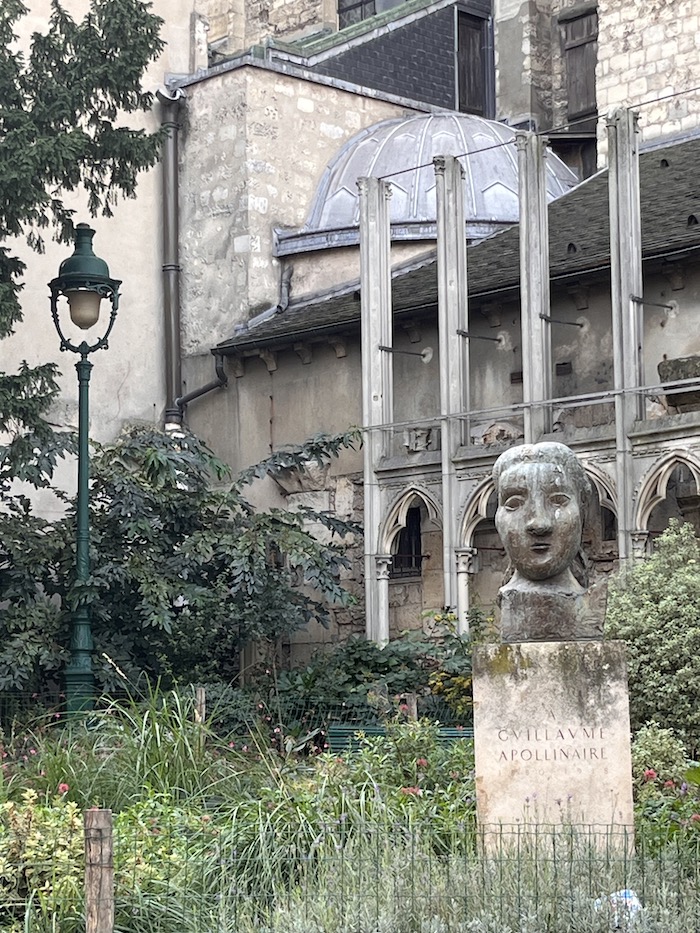Attached to the Saint-Germain-des-Près church, the small Laurent Prache square hides a mysterious story. It is the story of a gift made to the city by Picasso, which disappeared at the end of the 20th century and was found in a wooded area in Val-d’Oise a few years later. How and why? It remains a mystery to this day… A curious art story to discover during your Parisian strolls in the 6th arrondissement.
“To Guillaume Apollinaire.” With these few words, a bust can be found in the Laurent Prache square, just a few steps from the main entrance of the Saint-Germain-des-Près church. However, the sculpture does not represent the poet, a close friend of Picasso who died in 1918, but rather Dora Maar, the muse and mistress of the Spanish painter. By creating this bust, Picasso likely wanted to bring together in a symbolic place two of the most important people in his life, both legendary figures in the intellectual history of the neighborhood. The bust was inaugurated in June 1959.
Everything was fine until one morning in March… 1999. On March 31st, to be exact, the neighborhood woke up to find the pedestal empty. Dora Maar had disappeared! Only a few chisel marks bore witness to the theft of a work that weighed a hefty 80 kilograms. Other than that, there were no leads, and it was believed that the bust was lost forever in the labyrinth of the illegal art market.

In April 2000, a retired art enthusiast named Ange Tomaselli visited the Château de Grouchy in Val d’Oise, a cultural site that also serves as the town hall for the small town of Osny. Upon entering the main hall, he noticed an astonishing statue at the top of the main staircase. A learned scholar, he immediately recognized it as a Picasso and approached the Mayor to gather more information about the piece. What a surprise when he was told that the bust was not a Picasso at all but had been found by municipal workers at the bottom of a ditch in the wooded area adjacent to the Château’s gardens. The work, considered not very beautiful but rather original by the town’s cultural services, had not been deeply investigated and was then displayed in the town hall. Mr. Tomaselli left, skeptical.
But a few months later, our persistent retiree stumbled upon a photo of the sculpture in an art book mentioning the 1999 theft. He was right! Informed, the Paris city hall then initiated legal proceedings against Osny’s town hall, unwittingly guilty of handling stolen goods! Embarrassed and even dismayed, the Mayor of the small town in Val d’Oise was forced to admit his mistake, and the statue was reinstalled in Paris on December 18, 2001.
The return was carried out without any official ceremony and away from the public eye. So much so that, since then, some have accused the town hall of having installed a copy instead. While there may always be a shadow of doubt, we can still affirm that Dora Maar has returned to Saint-Germain-des-Près. And if this bust could talk, it would have many stories to tell us…


